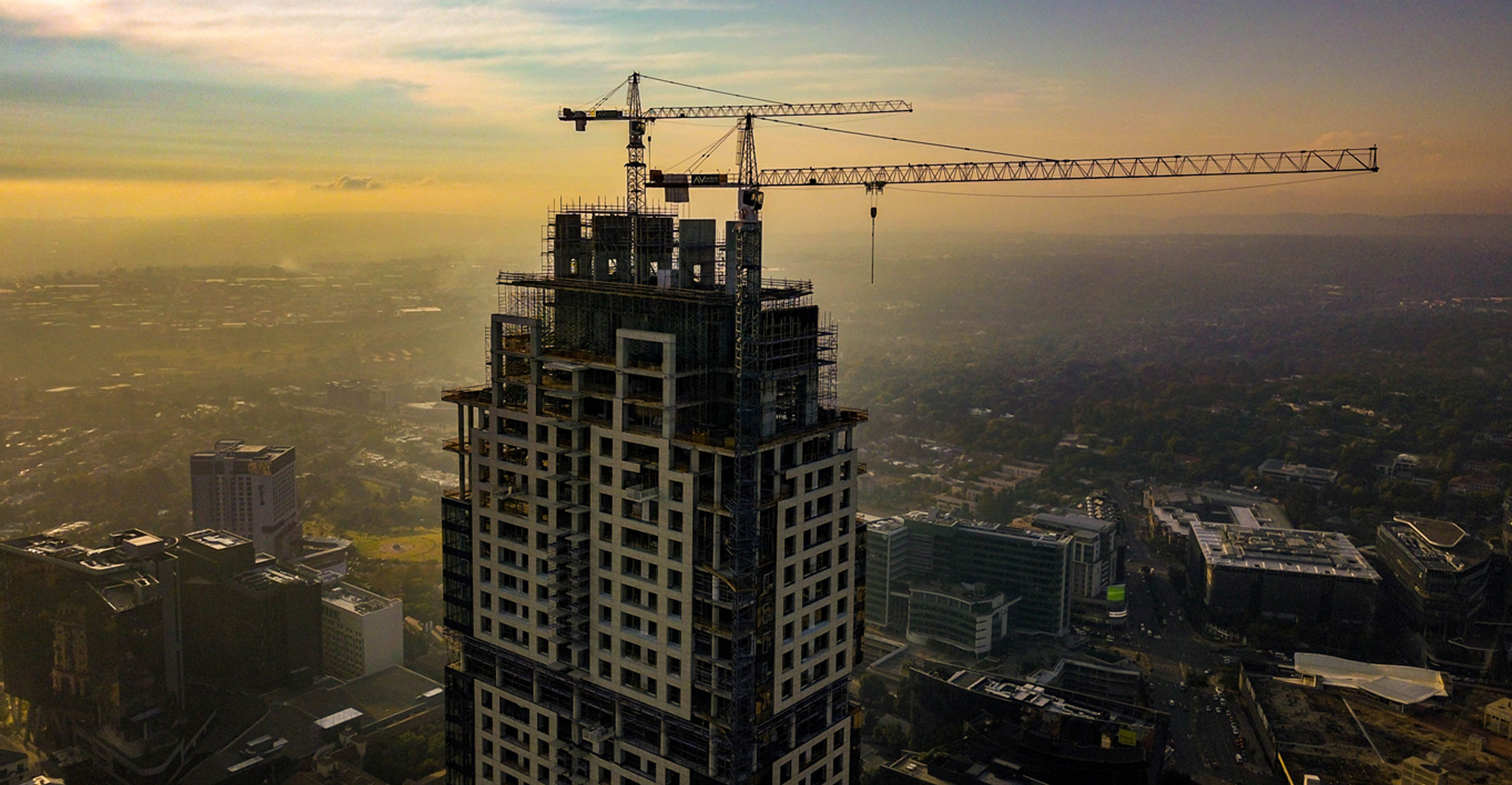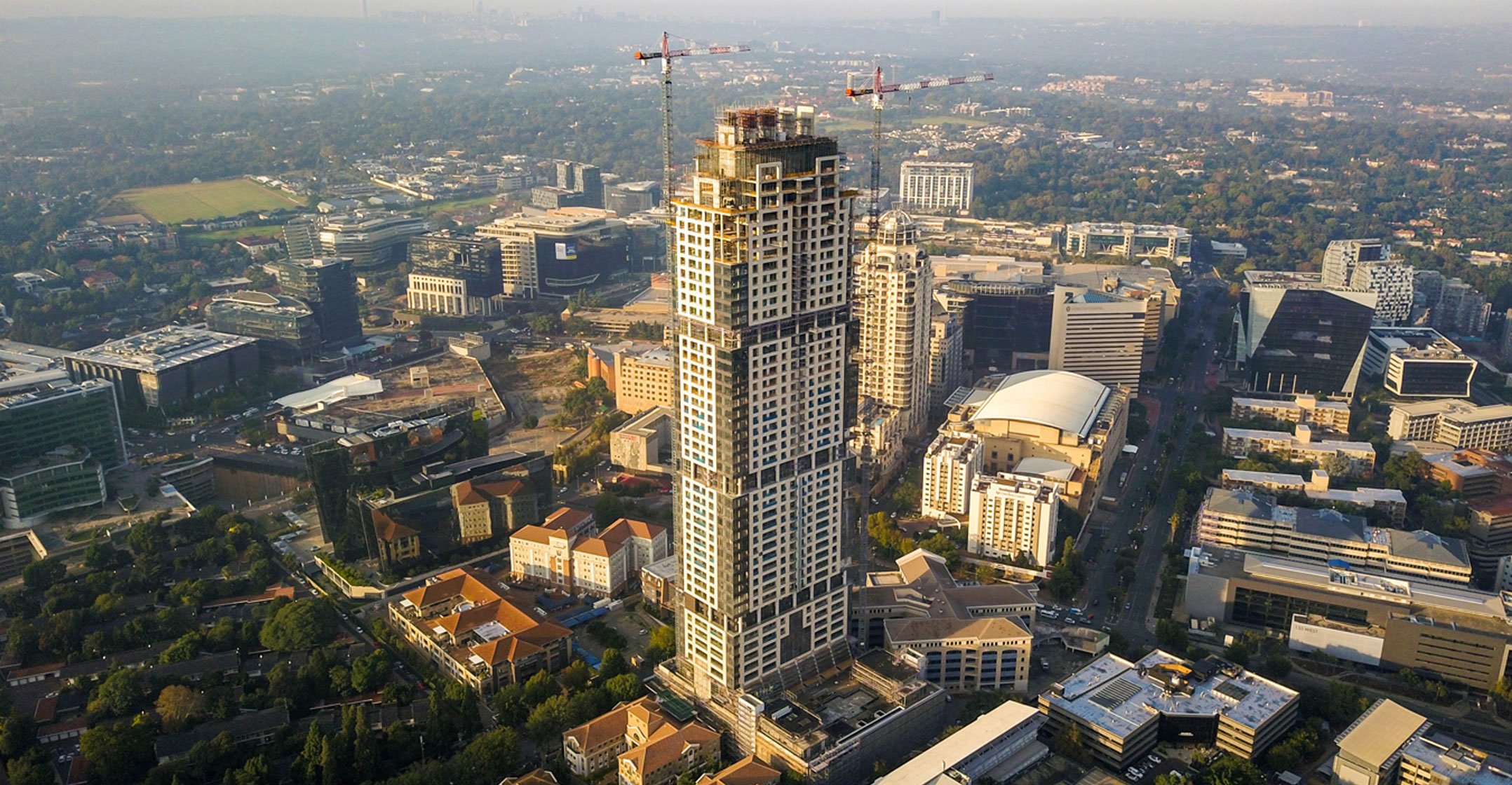
What do South Africa, Ivory Coast and Morocco have in common? The three countries spread across south, west and north Africa are all vying to build the continent’s tallest building.
The Leonardo, in Johannesburg’s upmarket Sandton neighbourhood, is 234m high and is the current holder of the prestigious title. Yet not long after it officially opened in October, the skyscraper is expected to be topped by the Mohammed VI Tower in the Moroccan capital of Rabat within the next three years.
Construction of that 250m-high building started a year ago and when done “will have 55 floors hosting a luxury hotel, prestigious offices and luxury apartments as well as an observatory at the top of the tower”, according to Leila Haddaoui, the deputy MD of O Tower, a subsidiary of the privately-owned FinanceCom SA Group that’s commissioned and financed the project.
Construction is on track to be completed by May 2022, added Bjorn Walgraeve, project director from Belgium’s Besix Group, which was awarded the construction contract in October 2018. “There are currently 300 people on site, but it will increase to 2 000 at peak,” he said.
Further south, another contender for Africa’s highest is the F Tower, set to be built in Ivory Coast’s commercial capital of Abidjan. Construction is yet to get underway, but PFO Africa, a firm owned by Lebanese-Ivorian architect Pierre Fakhoury, has already tipped it as the tallest on the continent, peaking at 283 meters when built.
F tower is set to be “an architectural feat, with a symmetrical geometry, like an African mask”, PFO says on its website.
Late to the party
Fakhoury is no stranger to superlatives, having designed the world’s largest church, the Basilica of Our Lady of Peace of Yamoussoukro, in the hometown of former Ivorian president Felix Houphouet Boigny.
Africa has been late to the tall-building party, with Asian and Middle East countries having nine of the 10 highest skyscrapers — all built in the last decade. Even when or if the F tower is constructed, it will still be about a third of the height of the world leader — the Burj Khalifa in Dubai. The iconic Eiffel Tower in Paris, completed more than 130 years ago in 1889, is 324m tall at its tip.
“After 9/11, everybody briefly thought we’d seen the end of skyscrapers and it’s actually just the opposite,” Eitan Karol, CEO of Louis Karol Architects, said by phone from Cape Town. “People naturally like tall buildings because it’s an important symbol and it gives the city something,” he said.

The Carlton Centre in the downtown Johannesburg had held the title of Africa’s tallest building since the late 1960s, when it was built by Anglo American Properties for about R88-million. The Leonardo has dethroned that feature of the city skyline, as made official by the Council on Tall Buildings and Urban Habitat.
“The race to get the tallest building in your city is symbolic,” said Philippa Tumubwainee, head of the department of architecture and planning at the University of Cape Town.
“Tall buildings need relatively complex engineering, innovative thinking, some kind of forward-thinking structural system because you’ve got to get people and material up,” she said. “You have to have the skills, you have to have the labour, you have to have the money. It’s an expensive exercise.” — Reported by Leanne de Bassompierre, with assistance from Souhail Karam, (c) 2020 Bloomberg LP




